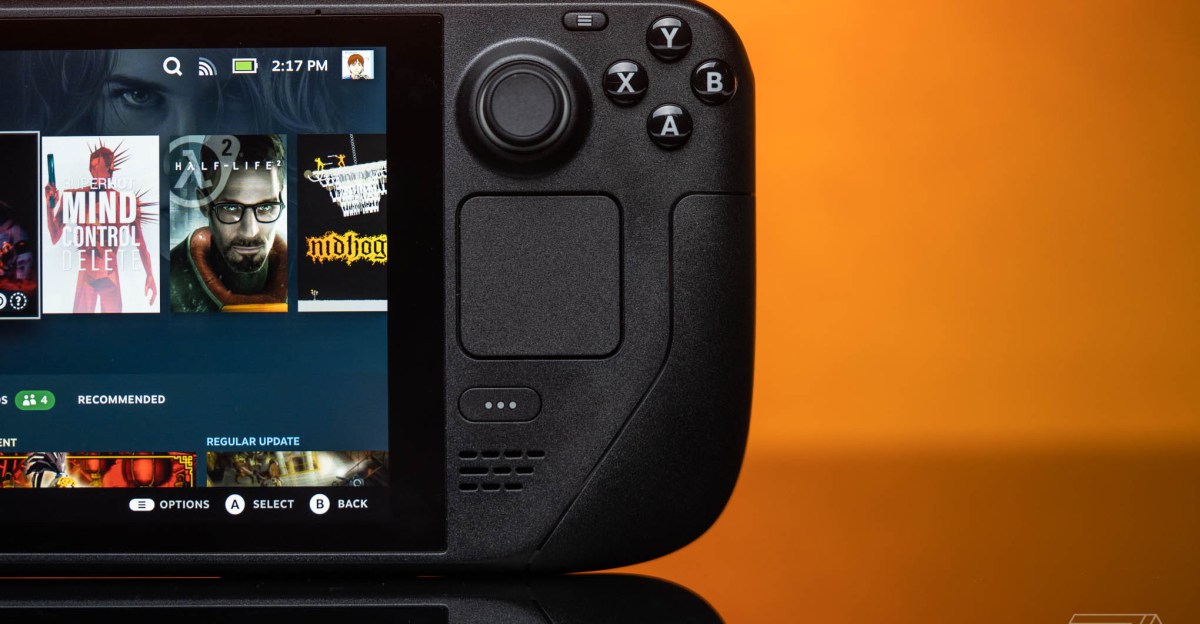The Rise of the Steam Deck: Transforming Handheld PC Gaming
Three years after its launch, the Steam Deck has revolutionized the handheld gaming landscape, setting new standards and captivating gamers worldwide. Valve Corporation’s entry into the handheld gaming market has not only introduced a compact gaming PC but has also reshaped how we think about gaming on the go. In this article, we’ll explore the Steam Deck’s impact on handheld gaming, its features, and what the future holds for portable gaming devices.
What is the Steam Deck?
The Steam Deck is a handheld gaming device that combines the portability of traditional handheld consoles with the power of a gaming PC. Launched in February 2022, it runs on a custom AMD APU, boasting a quad-core Zen 2 CPU and RDNA 2 GPU architecture. This combination allows the Steam Deck to run a vast library of PC games from the Steam platform, making it a unique offering in the gaming market.
Designed to provide an experience akin to playing on a desktop PC, the Steam Deck features a 7-inch touchscreen display, thumbsticks, trackpads, and a full set of controls, including triggers and bumpers. This ergonomic design has won over gamers who desire both comfort and functionality while playing their favorite titles on the go.
Key Features That Set the Steam Deck Apart
The Steam Deck is packed with features that make it stand out in the crowded handheld gaming market:
- Versatile Gameplay: With the ability to run almost any game available on Steam, the Steam Deck opens up a world of possibilities for gamers. Whether it’s AAA titles or indie gems, the device can handle it all.
- Customizable Controls: The Steam Deck allows players to customize their control schemes, providing flexibility to suit personal preferences and gameplay styles.
- Docking Capability: Similar to the Nintendo Switch, the Steam Deck can be docked to connect to a TV or monitor. This feature transforms the handheld experience into a full-fledged gaming setup.
- Open System: Unlike traditional consoles, the Steam Deck runs on a Linux-based operating system, allowing users to install third-party applications and even other game stores.
- Affordable Pricing: Starting at a competitive price point, the Steam Deck offers excellent value for the hardware and capabilities it delivers.
The Impact on Handheld Gaming
The Steam Deck has significantly impacted handheld gaming, challenging the status quo and pushing other manufacturers to innovate. Here’s a closer look at its influence:
1. Bridging the Gap Between Consoles and PCs
Before the Steam Deck, dedicated handheld consoles primarily focused on exclusive titles and limited functionality. The Steam Deck bridges the gap between console and PC gaming, providing access to a vast library of PC games. This flexibility has attracted gamers who prefer the extensive selection of Steam over traditional console ecosystems.
2. Encouraging Game Developers
The rise of the Steam Deck has encouraged developers to optimize their games for handheld platforms. Many games that previously struggled to adapt to smaller screens and limited controls are now being redesigned to enhance the portable gaming experience. This shift has resulted in a surge of titles being released or updated for compatibility with the Steam Deck.
3. Shaping Consumer Expectations
As the Steam Deck set new standards for handheld gaming, consumer expectations have evolved. Gamers now demand high performance, extensive libraries, and versatility from portable devices. This shift has compelled competitors to rethink their strategies, leading to a more competitive landscape in handheld gaming.
Real-World Experiences with the Steam Deck
Many gamers have shared their experiences with the Steam Deck, highlighting its strengths and occasional shortcomings:
- Performance: Users have praised the Steam Deck for its impressive performance across various titles. Many report smooth gameplay and high frame rates, even in graphically demanding games.
- Battery Life: While some users find the battery life adequate, others wish it could last longer, especially during intensive gaming sessions.
- Portability: The device’s size and weight make it easy to carry, allowing gamers to enjoy their favorite titles on commutes or while traveling.
The Future of Portable Gaming Devices
Looking ahead, the success of the Steam Deck may pave the way for a new generation of handheld gaming devices. As technology advances, we can expect:
- Enhanced Graphics and Performance: Future portable devices are likely to feature even more powerful hardware, enabling them to run the latest games with stunning graphics.
- Improved Battery Technology: Innovations in battery technology could lead to longer gaming sessions without the need for frequent recharging.
- More Integration with Cloud Gaming: As cloud gaming services grow in popularity, future handheld devices may incorporate seamless access to cloud libraries, allowing players to enjoy games without the need for extensive local storage.
Conclusion
The Steam Deck has undeniably transformed the handheld gaming landscape, setting new standards for performance, versatility, and accessibility. Its impact resonates not only within the gaming community but also across the entire industry, compelling other manufacturers to innovate and adapt. As we look to the future of portable gaming devices, it’s clear that the Steam Deck has laid a robust foundation for what’s to come. With advancements on the horizon and an ever-growing library of games, the possibilities for handheld gaming are more exciting than ever.
In just three years, Valve’s Steam Deck has shifted the dynamics of how we engage with video games on the go. It’s not just a device; it’s a movement that embraces the freedom of gaming anywhere, anytime. As we venture into this new era of gaming, one thing is certain: the Steam Deck has carved its place in the hearts of gamers around the world.
See more Future Tech Daily

